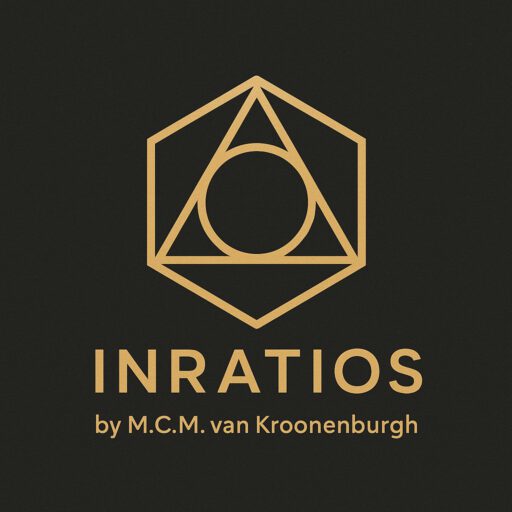Whitepaper – The role of the radius in the Geometric Ratio Model (GRM)
From Classical Dependency to Derived Proportion
Introduction:
This second whitepaper in the GRM series by M.C.M. van Kroonenburgh presents a fundamental reformulation of circular geometry. While classical geometry defines circles based on their internal radius and relies on the irrational constant π, the Geometric Ratio Model (GRM) reverses this logic: it starts from the square that bounds the circle. From this reference structure, the radius becomes a derived value, fixed at 0.1250 SPU.
What you’ll find inside:
- A consistent geometric framework for deriving the radius from the bounding square
- A side-by-side comparison between classical and GRM logic
- Applications in CAD, AI, education, and interface design
- Fully worked-out ratios, formulas, and visualizations (including Figure B.1)
- A practical and theoretical foundation for dimensionally grounded design
Why it matters:
This whitepaper makes geometry more intuitive, more visual, and more applicable in digital systems—without sacrificing mathematical rigor. Whether you’re a designer, educator, developer, or theorist, GRM provides a scalable and rational way to define and analyze geometric forms.
What’s New in Version 2.0?
The whitepaper “The Role of the Radius in the Geometric Ratio Model (GRM)” has been completely revised and expanded.
While version 1.1 introduced the basic idea of the radius as a derived quantity, version 2.0 goes further, offering a full narrative structure, deeper theoretical logic, and broader practical applications. It is part of the GRM Foundation Series, and builds directly on new insights developed since the original release.
Here’s what’s new:
✅ Structured narrative
The new version takes the reader step-by-step:
- From classical geometry (radius as fixed input),
- To derived radius (from the frame outward),
- And into a full ratio-based system that works across dimensions.
✅ Radius as a system constant
Rather than being measured or assumed, the radius is now treated as a derived constant, a fixed outcome of a square (or cube) that a shape fills.
- In 2D: r = 0.1250 SPU
- In 3D: r = 0.1250 SPU (identical logic)
This leads to consistent scaling across all levels of form.
✅ Dimensional consistency
The paper now includes:
- Surface area via r² → 0.7854 SAU (circle)
- Volume via r³ → 0.5236 SVU (sphere)
- Direct derivation from the square or cube without π
This makes GRM a dimensionally scalable system based on visual structure, not abstract constants.
✅ Fuzzy classification
Rather than binary labels (“circle” or “not”), GRM introduces fuzzy classification:
Shapes can be evaluated based on how close their ratio is to ideal forms (e.g. 0.7854 for a circle).
This logic is better suited for AI and digital interpretation.
✅ Real-world applications
A new chapter shows how GRM helps:
- Recognize shapes in pixel images without reconstruction
- Detect deviations in medical scans
- Guide AI in structural design or visual composition
- Optimize shape reasoning in embedded systems
Published:
- version 1.0 May 16, 2025 | Language: English | Pages: 15
- version 1.10 May 16, 2025 | Language: English | Pages: 19
- version 1.10 May 16, 2025 | Language: English | Pages: 16
This work is officially registered via i-Depot (BOIP). Reference no. 151927 – May 10, 2025.

